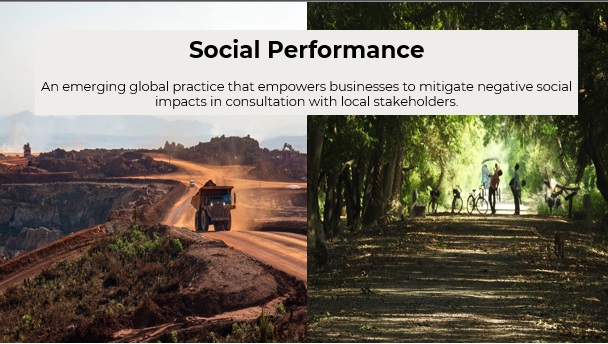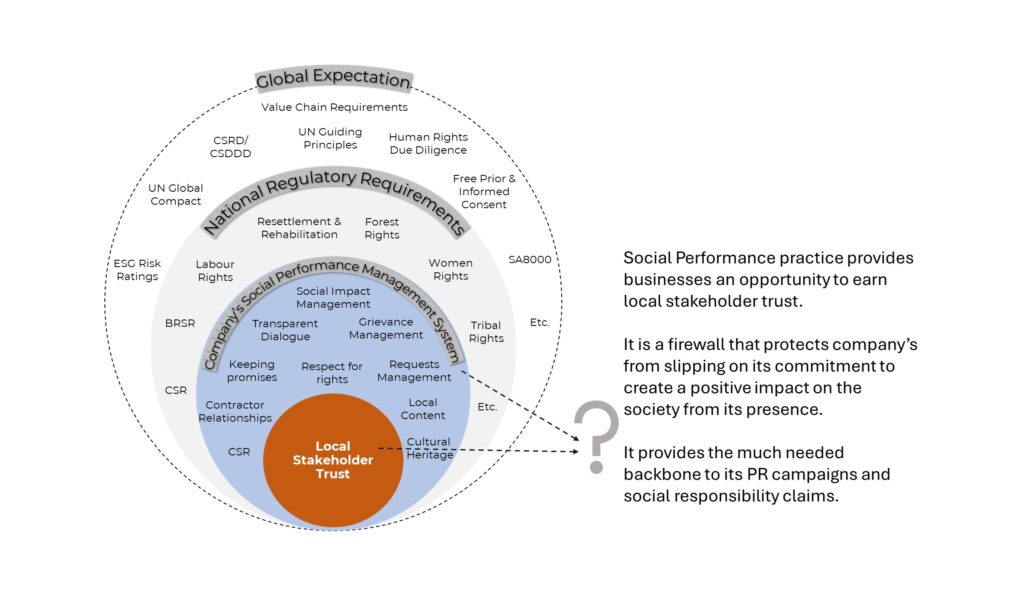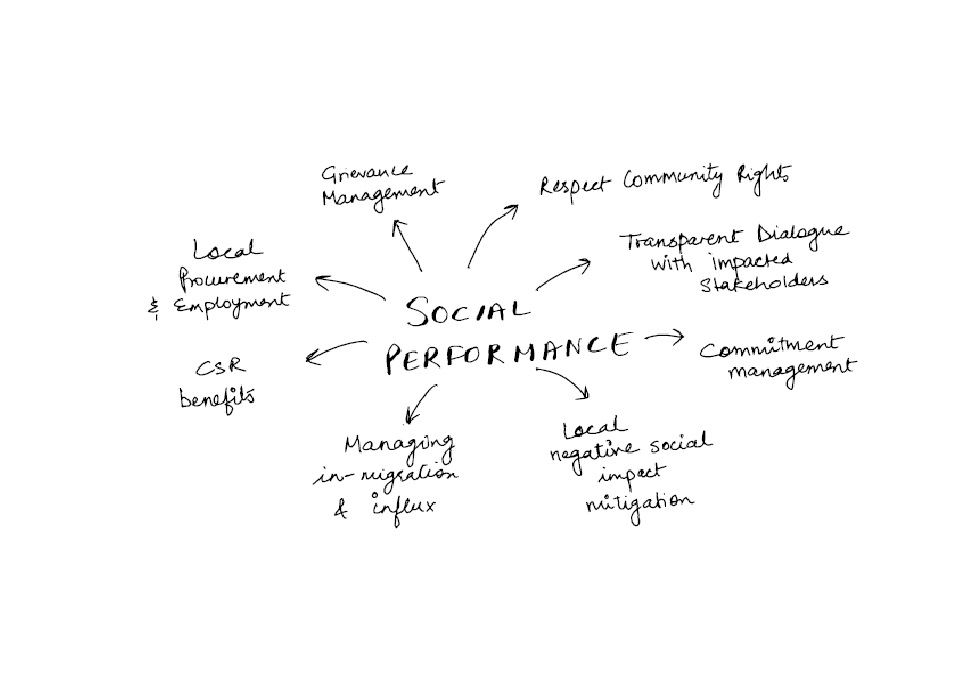
Business performance, financial performance and safety performance are frequently used terms in everyday mining business language. However, what about managing the social performance of the business?
Mining companies are increasingly recognizing that a government license to operate is not sufficient on its own. Ensuring community acceptance throughout the life of the mine is equally crucial. In a world where businesses are striving to be seen as globally responsible, it is imperative for mining companies to first address its localized social risks. In this context, mining companies worldwide are stepping up their community engagement practice through Social Performance. By harnessing the power of dialogue, Social Performance practices offer a promising solution for CEOs constantly concerned about maintaining their Social License.
Below are some of the key differentiators of a Social Performance approach, based on our experience as enablers for Social Performance in India and globally.
Social Performance focuses on addressing the localized social license risks. Unlike popular Public Relations centric approach that focus on building an image, Social Performance focuses on building trust through consistent, everyday actions and behavior of companies towards communities. It requires businesses to take an approach that focuses to systematically identify, monitor and mitigate the social license risks proactively. Social Performance addresses three areas that jeopardize a mining companies’ social license a) overlooking community engagement needs b) lack of systems and guidance about community engagement and c) unreliable reporting of ground situation to management.
Open and transparent community consultation is the cornerstone to earning Social License to Operate using Social Performance Approaches. Rather than selectively sharing information deemed necessary by the company, the Social Performance approach encourages businesses to disclose and discuss all information crucial for community decision-making. This approach involves consulting with communities about; a) potential, real and perceived negative impacts of business. b) avoiding or minimizing the negative impact of the mine, c) building a community vision to grow with the mine through employment and procurement opportunities, and lastly d) establishing mechanisms for both the company and the community to be held accountable.

Social Performance enables businesses to transition from operations-centricity to community-centricity. Mining company systems are primarily designed to expedite the operationalizing the mine. These systems target how fast the mine/plant can be made operational. Although company’s intent is always to avoid local conflict, there often lacks a structured process and clear guidance on how to earn community support. As a result, despite good intentions, company-community situationships frequently arise. Social Performance seeks to prevent these issues by developing clear systems, standards and protocols. These frameworks guide the management as well as the site-based teams on their responsibility for consulting with communities and outline specific engagement milestones that must be achieved.
Social Performance forces businesses to look beyond CSR initiatives to earn a Social License. A Social Performance approach emphasizes that CSR can attract community to benefits, they are not adequate to earn or sustain their long-term support. Therefore, a Social Performance approach sees CSR as only one element of a broader social license strategy. In addition to CSR, companies on a Social Performance journey follow site-specific internal procedures that guide them on consulting with potentially impacted communities, engaging with vulnerable groups, taking a consultative approach to land acquisition, conducting a social risks analysis, developing and implementing social risk mitigation plans, conduct a stakeholder analysis and developing an integrated stakeholder engagement plan. It formalizes the ad-hoc and need-based approach into a systematic ongoing engagement process that can be monitored, evaluated and continuously improved .to increase company’s local reputation.

What does a Social Performance Management System entail ?
The purpose of a Social Performance Management System (SPMS) is to ensure that company actions align with and respect the interests and expectations of local stakeholders. To achieve this, an SPMS focus on identifying local interests, developing localized approach to address community risks, and minimizing unpleasant surprises in company-community relationships. The key elements of a Social Performance approach include:
Identify and address social impacts using consultation-based approaches
- Respecting the rights of workers, communities, and other marginalized groups impacted by the company.
- Engaging in transparent dialogue with communities about potential negative impacts.
- Ensuring land access and acquisition is based on consultation and respects the rights of local stakeholders.
- Addressing issues related to business presence such as influx and in-migration, pollution, water, and benefits distribution.
Local Stakeholder Relationship Management
- Managing local commitments and promises
- Grievance Management
Co-design Local Content and benefits strategy
- Co-develop local procurement and local employment targets and action plans
- Co-develop social investment and livelihood restoration planning
Monitoring and reporting of social risks to management
- Governance of social risks
- Measure social performance and progress
- Take timely corrective and preventative action
- Report on social performance
How to embark on a Social Performance journey?
If you are reading this article, then you are at least thinking about Social License. Below are some ideas to get moving on your SP journey:
Establish leadership’s position on Social License: The purpose of social performance is to drive business towards constructively improving their local reputation. However, social performance is often counterintuitive to business objectives, especially, when departments are motivated by KPIs focused on meeting production and financial targets. Under such pressure, an engagement-driven process might be seen as ‘causing delays’ in the business-as -usual processes. Therefore, it is vital for the social performance mindset to be actively supported by the leadership.
Develop systems that mandate social risks management: Social risks are often known within companies, as most departments have their ‘sources’ who inform them about issues affecting employees or communities. Implementing a system encourages proactive, thorough and guided action to identify and mitigate local stakeholder issues. Therefore, most organizations that practice Social Performance have at least three operational standards:
1. Operational Grievance Mechanism Standard,
2. Local Stakeholder Engagement Standard aligned to mining stage and impacts and
3. Social Risk Governance and Reporting Standard.
Companies usually follow industry-specific guidance, such as the ICMM for mining.
Organize for Social Performance as a Coordinating Function: Stakeholder Engagement is a topic that often garners attention, and any mention of it tends to solicit inputs and feedback. While business commonly assert that they engage with their employees and communities, these engagements are often solely burdened on the corporate social responsibility (CSR) department. However, social performance practitioners advocate for establishing SP as a cross-cutting function because every department, including contractors can either mitigate or create risks for Social License. Businesses should position SP as a coordinating function that collaborates with every department to ensure they meet their social performance and engagement targets, align business goals with community goals. This approach enables businesses to realistically monitor their social risks without relying solely on the CSR department to earn local trust or earn social license for the business.
Common Pitfalls that business should avoid in its Social Performance journey.
- Not communicating the leadership vision to pursue Social License: forgetting that SP is a journey.
- Assign Social Performance responsibilities to only one department.
- Not focusing enough on capacity building or stakeholder engagement skills.
- Outsourcing company’s responsibility to engage with communities.
- Identifying social risks and mitigation measures without involvement of impacted stakeholders.
- Not developing KPIs to track, monitor or measure effectiveness of Social Performance.